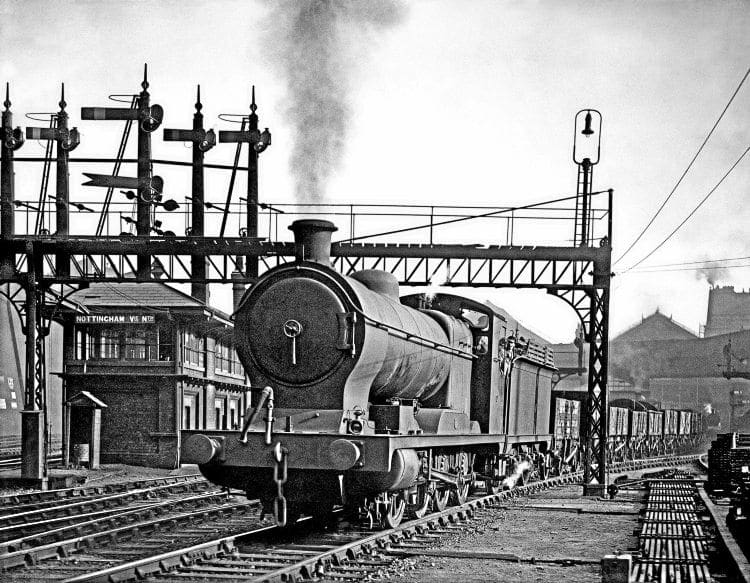On September 4, 1967, Nottingham Victoria station bade farewell to its last passenger. In the first of a two-part feature to mark the 50th anniversary of the closure of a much loved station, Robin Stewart-Smith looks at the years from construction to the start of the Second World War in 1939.
Early years and construction
Nottingham’s massive Victoria station was a magnificent structure – the last of the inspiring Victorian railway age ‘Cathedrals of Steam’.

In its early days, the stunning overall glazed roof and elegant end screens made it light and airy – in spite of the two vast island platforms being well below ground level in a deep sandstone cutting.
Enjoy more Railway reading in the monthly magazine.
Click here to subscribe & save.
Back in October 1881, Nottingham Corporation’s General Purposes Committee expressed the view that the Midland Railway’s 1848 station, located well south of Broadmarsh, was inconvenient and that it would be desirable to have a more centrally located joint station. In November 1888 a committee was set up to help promote plans for a central station.
In September 1889 Sir Edward Watkin of the Manchester, Sheffield & Lincolnshire Railway (MSLR) approached the Great Northern Railway (GNR) as to the possibility of building a joint line from Nottingham to meet the Metropolitan Railway at Aylesbury and so gain access to London. Although the GNR declined to join the MSLR in its London Extension project, Nottingham Corporation gave support for the Parliamentary Bill.
By 1892 the MSLR line from Beighton (near Sheffield) made a connection with the GNR Leen Valley line extension at Annesley South Junction (north of Nottingham). This opened for both passenger and goods traffic by January 2, 1893. Here, near to Annesley and Newstead Collieries, extensive exchange sidings for coal traffic handling up to 2,000 wagons were constructed, together with a wagon repair shop and electricity generating plant.
On March 28, Parliament authorised the MSLR’s ambitious ‘London Extension’ from Annesley to Quainton Road and eventually to a new terminus in London at Marylebone. This was the last main line to be authorised in the UK prior to the modern era build of HS1 and HS2.
Contract No. 1 from Annesley to East Leake was awarded to Logan & Hemingway of Market Harborough and signed on September 21, 1894. The new line, which would cut right through Nottingham from north to south, involved massive engineering works and large-scale disruption in the area. Once the negotiations to acquire the necessary land were completed (at a cost of £473,000) a huge 13-acre site was carved out for a new central station in the very heart of Nottingham.
A massive 600,000 cubic yards of sandstone were excavated. Whole streets were demolished including 1,300 dwellings, 24 public houses, two schools – including the Nottingham Ragged School, the old Guildhall, the Nottingham Union workhouse and
St Stephen’s Church. Around 6,000 people were displaced by the construction works and alternative accommodation had to be built for them elsewhere in Nottingham by the railway company.
Read more in the July 2017 issue of The RM – on sale now!




